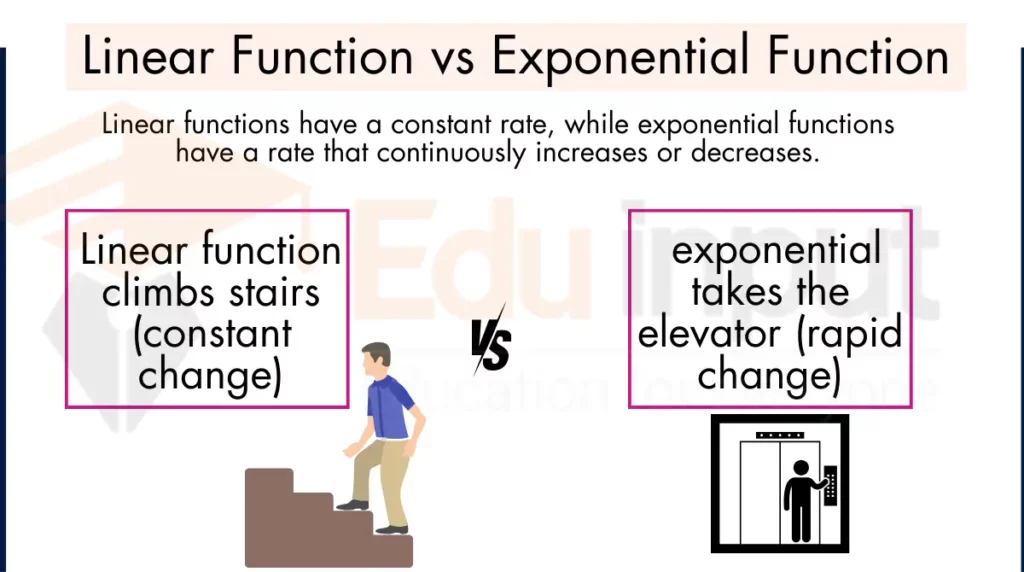Difference Between Linear Function and Exponential Function
The main difference between linear and exponential functions is their rate of change. Linear functions have a constant rate, while exponential functions have a rate that continuously increases or decreases.

Comparative Analysis of Linear Function and Exponential Function
1: Rate of Change
Linear: In linear functions, the rate of change is constant. This means that for every equal increase in the input (x), the output (y) increases by the same amount. Imagine climbing a staircase – each step takes you the same distance higher.
Exponential: In exponential functions, the rate of change continuously increases or decreases. This means that for every equal increase in the input, the output increases (or decreases) by a larger multiplier. Picture bacteria multiplying or radioactive decay – the change gets faster or slower over time.
2: Visually
Linear function: Graph is a straight line with a constant slope.
Exponential function: Graph is a curve that either bends upwards or downwards, getting steeper or shallower as it progresses.
Examples
Linear: Distance traveled at a constant speed, cost of groceries with a fixed price per item.
Exponential: Population growth with constant birth rate, radioactive decay, and compound interest.
Linear Function vs Exponential Function
Here is a table summary showing Difference Between Linear Function and Exponential Function:
| Property | Linear Function | Exponential Function |
|---|---|---|
| Definition | f(x) = mx + b | f(x) = a^x, where a is a positive constant and a ≠ 1 |
| Rate of Change | Constant | Increases or decreases exponentially depending on the value of a |
| Graph | Straight line | Non-linear curve that approaches the x-axis asymptotically as x approaches negative infinity and increases/decreases without bound as x approaches positive/negative infinity depending on the value of a |
| Examples | y = 2x + 3, distance traveled at a constant speed | y = 2^x, population growth over time |
| Applications | Modeling linear relationships between variables, representing uniform motion | Modeling exponential growth or decay, representing compound interest, radioactive decay |







Leave a Reply